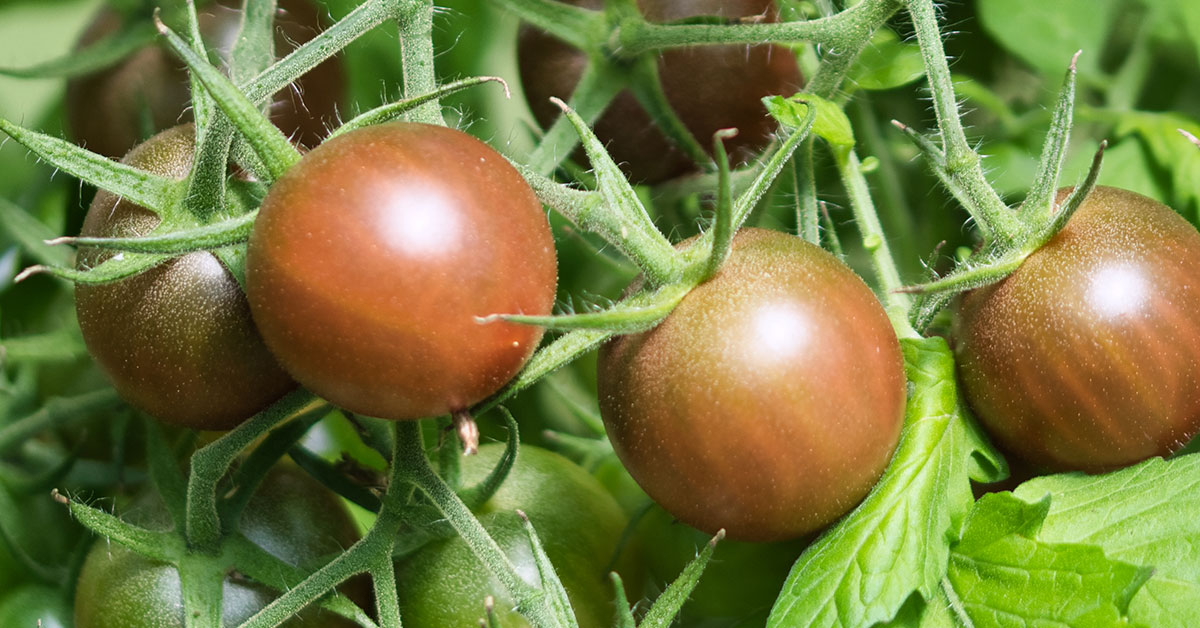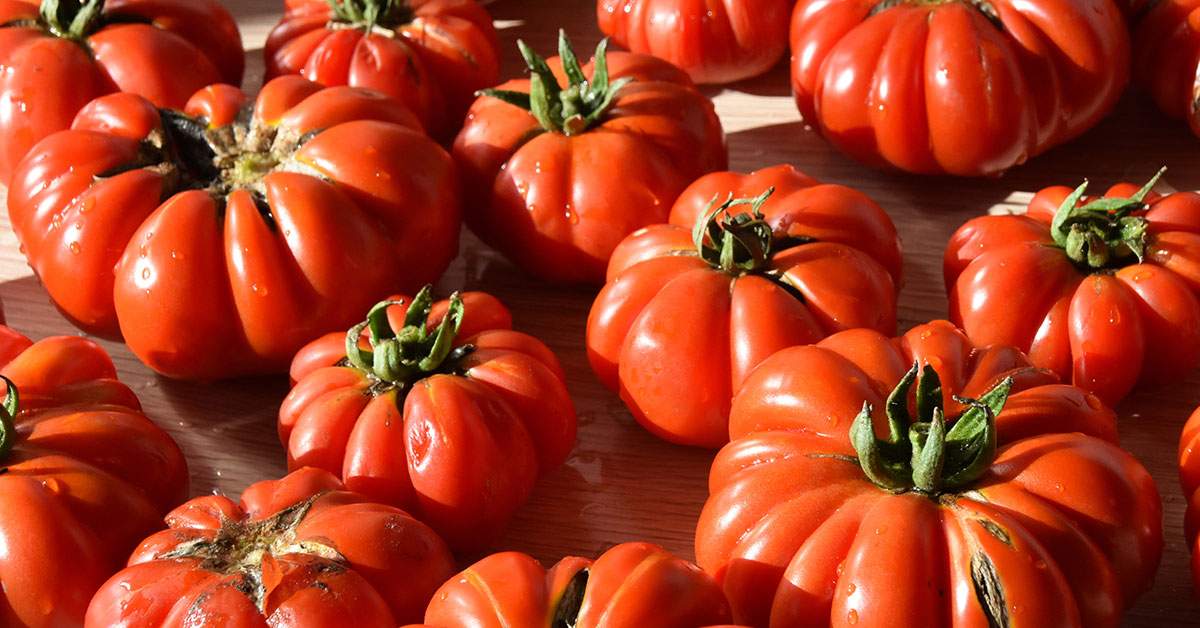The Japanese Black Trifele tomato is a unique and beautiful addition to any garden. This heirloom tomato variety originates from Russia and was introduced to the Japanese market in the 1990s. Its striking appearance and rich flavor have made it a popular choice among gardeners and food enthusiasts alike. In this blog post, we will explore the history of the Japanese Black Trifele tomato, its distinct characteristics, and how to grow and enjoy this delicious tomato variety.
What is a Japanese Black Trifele tomato?
Japanese Black Trifele tomato is a unique heirloom tomato variety that originated in Russia. It has a distinctive pear shape with a dark, purplish-black color and a slightly rough texture. This tomato is known for its rich, sweet, and complex flavor with a hint of smokiness. The Japanese Black Trifele tomato is also a popular choice among gardeners for its beautiful appearance and high yield.
The name “Trifele” comes from the Russian word for “pear,” which perfectly describes the shape of this tomato. Despite its name, the Japanese Black Trifele tomato has no connection to Japan, but it has become a popular variety among Japanese gardeners and chefs.
This tomato variety is often compared to the popular Black Krim tomato, but it has a stronger flavor and a more distinct shape. The Japanese Black Trifele tomato is also more disease-resistant than the Black Krim, making it a great choice for home gardeners.
If you’re looking to add some variety to your tomato garden, the Japanese Black Trifele tomato is definitely worth considering. Its unique appearance and delicious flavor make it a standout choice for any gardener or food enthusiast.
How to start Japanese Black Trifele tomato seeds
Starting tomatoes from seed is a cost-effective and rewarding way to grow your own tomato plants. To begin, choose the tomato varieties that suit your preferences and growing conditions.
Fill seed trays or pots with a lightweight and well-draining seed starting mix, plant the seeds at the recommended depth, and provide adequate moisture and warmth for germination.
Once the seedlings have developed their second set of true leaves, they can be transplanted into larger containers or individual pots. Gradually acclimate the seedlings to outdoor conditions before transplanting them into the garden.
By following these basic steps, you can successfully start tomatoes from seed and enjoy a thriving crop of homegrown tomatoes.
Additional Resource: Our comprehensive guide to starting tomatoes from seed
Growing & care
Transplanting and caring for tomatoes outdoors involves a few essential steps. First, choose a sunny location with well-drained soil. Prior to transplanting, harden off the seedlings by gradually exposing them to outdoor conditions.
Dig a hole slightly larger than the root ball of each seedling and plant them, burying the stem up to the first set of leaves. Water the seedlings thoroughly after transplanting. Provide consistent watering, aiming for 1-2 inches of water per week.
Stake or cage the plants for support and prune indeterminate varieties by removing suckers. Monitor for pests and diseases, taking prompt action if necessary. By following these steps, you’ll set your tomato plants up for healthy growth and a fruitful harvest.
Additional Resource: How to transplant and care for tomatoes outdoors
Common tomato pests and diseases
Tomatoes are susceptible to various pests and diseases that can affect their health and productivity. Some common tomato pests include aphids, tomato hornworms, whiteflies, and cutworms. These pests can cause damage to leaves, stems, and fruit, leading to reduced plant vigor and yield.
Additionally, tomato plants can be affected by diseases such as early blight, late blight, fusarium wilt, and verticillium wilt. These diseases can cause leaf discoloration, wilting, and fruit rot. Proper identification and timely intervention are crucial to effectively manage these pests and diseases and ensure the successful growth of tomato plants.
Additional Resource: Comprehensive list of tomato diseases and pests and how to fix them
Common problems
The Japanese Black Trifele tomato is a unique heirloom variety that is prized for its flavor and appearance. However, like any tomato plant, it is susceptible to certain problems that can affect its growth and yield. Here are some common problems that you may encounter when growing Japanese Black Trifele tomatoes.
- Blossom End Rot
Blossom end rot is a common problem that affects many tomato varieties, including the Japanese Black Trifele. This condition is caused by a calcium deficiency in the plant, which leads to a black, sunken spot at the bottom of the fruit. To prevent blossom end rot, make sure that your plants receive consistent watering and adequate nutrients, especially calcium. - Tomato Hornworms
Tomato hornworms are a type of caterpillar that can quickly defoliate a tomato plant. These pests are green with white stripes and can grow up to 4 inches long. To control tomato hornworms, inspect your plants regularly for signs of damage and remove any caterpillars by hand. You can also use natural predators like parasitic wasps to keep their population in check. - Early Blight
Early blight is a fungal disease that affects the leaves and stems of tomato plants. It appears as dark brown spots on the lower leaves of the plant, which can eventually spread to the entire plant. To prevent early blight, keep your plants well-ventilated and avoid watering them from above. You can also use fungicides to control the disease. - Fusarium Wilt
Fusarium wilt is a soil-borne fungal disease that affects many tomato varieties, including the Japanese Black Trifele. It causes the leaves of the plant to wilt and turn yellow, and can eventually kill the entire plant. To prevent fusarium wilt, rotate your crops each year and avoid planting tomatoes in soil that has previously been infected with the fungus.
In conclusion, growing Japanese Black Trifele tomatoes can be a rewarding experience, but it requires careful attention to the plant’s needs and potential problems. By being aware of these common issues and taking proactive measures to prevent them, you can enjoy a bountiful harvest of delicious and beautiful tomatoes.
Uses for Japanese Black Trifele tomato
Japanese Black Trifele tomato is a popular variety of tomato that originated in Russia. It is known for its unique shape, texture, and flavor. These tomatoes are typically used for a variety of culinary purposes due to their rich and savory taste.
One of the most common uses of Japanese Black Trifele tomatoes is in salads. They can be sliced and added to a variety of salads to add a burst of flavor and color. The texture of the tomato is firm and juicy, which makes it ideal for salads.
Another popular use of these tomatoes is in sauces and soups. Their rich and savory flavor adds depth and complexity to any recipe. They are often used in pasta sauces, stews, and chili recipes.
In addition to their culinary uses, Japanese Black Trifele tomatoes are also used for their health benefits. They are a great source of vitamins A and C, as well as antioxidants. These nutrients can help boost the immune system and protect against diseases.
Overall, Japanese Black Trifele tomatoes are a versatile and flavorful ingredient that can be used in a variety of recipes. Their unique shape and texture make them a favorite among chefs and food enthusiasts alike.













